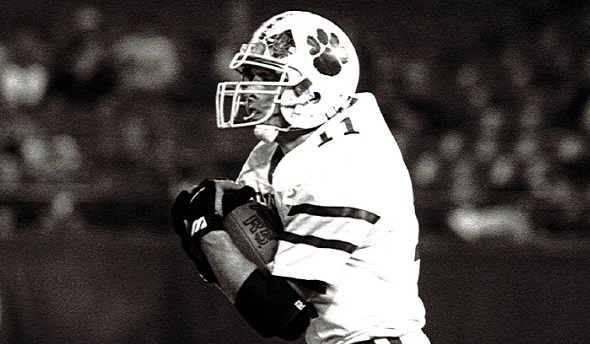
Heads and Heat
August 16, 2012
We are engaged in very serious discussions. They’re not only complicated, with unintended negative consequences possible from what are thought to be positive actions; they’re also a matter of life and death.
The topic is football – the high school sport under most scrutiny today and suffering from the most criticism it’s seen since the 1970s when catastrophic neck injuries spiked, liability awards soared, many insurers balked, and most helmet manufacturers abandoned the business altogether.
During recent years we have learned about the devastating long-term effects of repeated blows to the head; and we’re trying to reduce such hits. We’ve learned that 70 percent of concussions in football result from helmet-to-helmet contact, and we’re trying to have coaches teach blocking and tackling differently and have officials penalize “high hits” consistently and rigorously.
During the past several years we’ve learned that serious heat illness and heat-related deaths are 100 percent preventable, yet nationwide there were 35 heat-related deaths in high school football alone from 1995 to 2010; and we’re promoting practices that acclimatize athletes more gradually than “old school” traditionalists might advocate.
As we simultaneously address issues of heads and heat in football, some coaches may think we’re being overbearing, while many in medical fields say we’re out of date, citing higher standards of the American Academy of Pediatrics, National Athletic Trainers Association and National Federation of State High School Associations, as well as many of our counterpart organizations across the country.
As we consider in-season changes to improve athlete acclimatization and reduce blows to the head, we should be open to making out-of-season changes that work toward rather than in opposition to those objectives. There can be no sacred cows. The topic is too serious.
Ultimately, if we err in the outcome of this year’s discussions about heads and heat in football, it must be on the side of safety, on minimizing risks for student participants. They deserve it and, once again, the sport of football needs it.

Moment: 100-Yard TD Lifts Pennfield
September 17, 2020
By John Johnson
MHSAA Director of Broadcast Properties
NOTE: This week we begin a series of MHSAA Moments from Football Playoff Finals of years past. Over the coming weeks, we’ll offer video highlights including some of the longest plays and game-deciding moments from 1988 to the present.
In high school football, there are only two plays where you can score a 100-yard touchdown – both by the defense bringing the ball out of the end zone on a turnover.
For Battle Creek Pennfield in the 1991 Class CC Football Playoff Final at the Pontiac Silverdome, such a big defensive play got the Panthers out of the hole in a 14-8 victory over Negaunee.
A bad snap on a Pennfield punt resulted in a safety for a 2-0 Miners lead in the first quarter, and they had driven into the red zone after the ensuing free kick. But on a fourth-down play, the Cereal City contingent came up big.
Negaunee quarterback Ron Logan rolled left and threw to the end zone, where Pennfield linebacker Jason Livengood stepped in front of the intended receiver for the interception. Two yards deep in the end zone, Livengood found an alley and was off to the races for a 100-yard return. (High school statistics rules do not count end zone yardage.)
“I couldn’t believe it,” Livengood told the Battle Creek Enquirer after the game. “All I had to do was fake one guy and then it was open the rest of the way.”
The big play steadied the Panthers after their shaky start.
“It showed us we could do something,” running back Jim Martens told the Enquirer. “We needed a stop and we got more than that. We got six points.”
Still, the Panthers had to come up with a big drive in the third quarter – 67 yards in 17 plays taking 9:58 off the clock, with three fourth-down conversions – to take the lead to stay on Martens’ five-yard scoring run.
Negaunee mounted a drive from its own 37 to the Pennfield 18 during the final two minutes of the game. But after they completed a pass to the 11, the clock ran out on the Miners.

